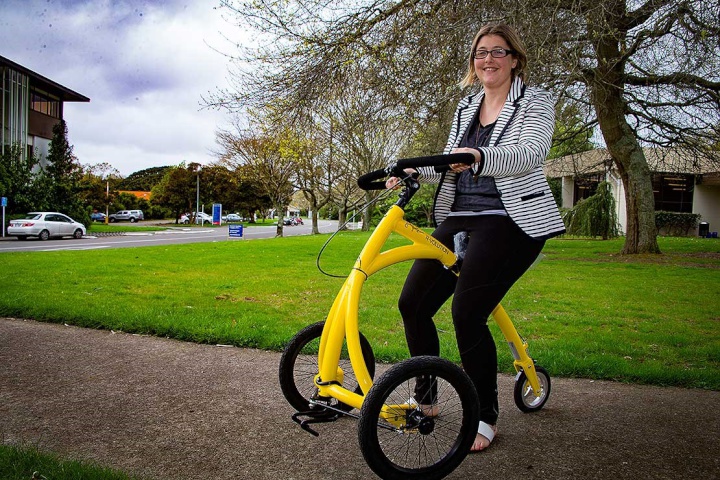Massey gifted two Alinker bikes
Massey gifted two Alinker bikes
Dutch designer, architect, humanitarian, and inventor of the Alinker bike Barbara Alink has donated two of the revolutionary bikes to Massey University.

Education Policy | Post Primary | Preschool | Primary | Tertiary | Search
Massey gifted two Alinker bikes
Dutch designer, architect, humanitarian, and inventor of the Alinker bike Barbara Alink has donated two of the revolutionary bikes to Massey University.

Dr Hodges runs the exercise clinic on Massey’s Manawatū campus, where they treat patients with a number of different chronic conditions. “We are hoping the Alinker bikes will be used by individuals from the local multiple sclerosis society who attend our clinic, and also our spinal cord injury patients who are currently doing well with locomotive training. We will be looking to complete research investigating the effects of the Alinker bike on mobility, and cognitive function in individuals with multiple sclerosis, over the next 24 months.
Dr Hodges says the Alinker allows individuals to stay or become active and also allows for engagement at eye level which is something people with mobility issues can struggle with. “It also allows people to be active without necessarily going to the gym to work out. Around half the people who use wheel chairs can still use their legs in some way, however there is nothing that specifically keeps their muscles moving.
“If you train your muscles, and engage your muscles, you may be able to better mitigate the effects of your health condition. If you are going out into the community at the same time, you get the full benefits of exercise. Being social, training the muscles and staying active, is an important part of living with an illness or disability,” Dr Hodges says.